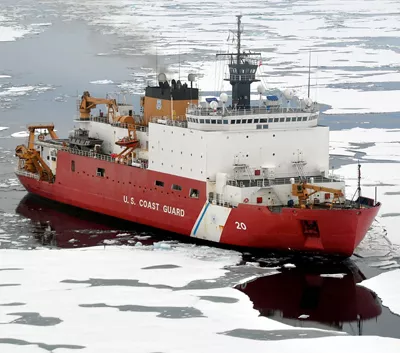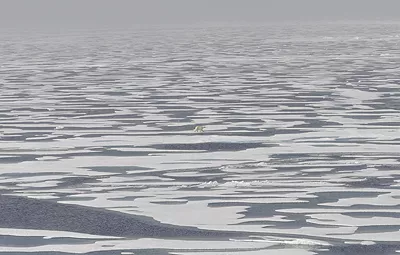
Climate change linked to unexpected 'blooms' under Arctic ice, says UTM research
Phytoplankton blooms unexpectedly occurring under Arctic sea ice are an indication of how climate change is affecting the Arctic ecosystem, says a study published in the June 8 issue of Science.
Phytoplankton, a microscopic organism that anchors the marine food chain, generally blooms in the Arctic’s open waters after the winter ice has melted back, says Kent Moore, a professor in the department of chemical and physical sciences at the University of Toronto Mississauga and a co-author on the study. “However, we’ve found evidence that the blooms are now occurring under the Arctic ice itself, and earlier than expected.”
Samples taken from the NASA-funded 2011 ICESCAPE (Impacts of Climate on EcoSystems and Chemistry of the Arctic Pacific Environment) cruise in the Chukchi Sea, northwest of Alaska, measured particulate organic carbon, an indicator of biological activity. Unusually, the team found an increase in this indicator as they moved from open water into fully consolidated ice.
Moore attributes the shifts in the blooms to changes in the availability of the sunlight and nutrients phytoplankton needs to grow.
Due to recent changes in Arctic sea ice, water beneath the ice is now much brighter, he says. “Compared to 30 years ago, there’s now 30 per cent less Arctic sea ice in the summer. As well, thicker ice that forms over many years is being replaced by thinner single-year ice.”

Compounding the effect of increased light, changes in wind patterns -- also the result of atmospheric warming in the region -- have caused more nutrient-rich water to rise from the bottom of the ocean towards the surface.
The combination of thinning ice and favourable winds means that phytoplankton blooms are now occurring three weeks or a month earlier than before. However, Moore points out, the entire food chain in the region is based on these blooms happening in mid-July, not in June.
“Now, part of the bloom may be occurring in conditions where organisms higher in the food chain can’t access it. The stress travels right to the top, potentially affecting marine mammals and seabirds.”
Moore believes these blooms to be indications of climate change. “It’s a second-order effect of global warming. When the climate warms, there can be unexpected shifts that can negatively impact the entire ecosystem.”
The new bloom activity also means researchers will need to reassess the amount of biological activity occurring in the Arctic. Previous estimates assumed that phytoplankton blooms only occurred in the open water.
“A lot of the Arctic Ocean is in a very similar situation, so it is quite likely that these under-ice blooms are occurring in other regions as well,” says Moore. “We may be underestimating the amount of phytoplankton production by 10-fold.”
MEDIA CONTACTS:
Professor G. W. Kent Moore
Department of Chemical and Physical Sciences
University of Toronto Mississauga
gwk.moore@utoronto.ca
Nicolle Wahl
U of T Mississauga Communications
905-569-4656
nicolle.wahl@utoronto.ca
